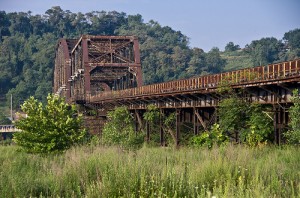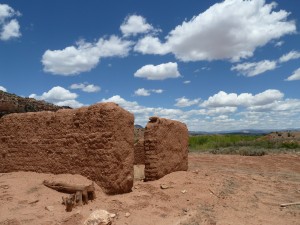This year April 19 to 27 is National Park Week. In his proclamation marking the event, President Obama called out the National Heritage Areas for their thirty year contribution highlighting the living history of our nation, stating:
“This year marks a significant milestone in America’s drive to preserve precious historic sites — the 30th anniversary of the first National Heritage Area. For decades, the National Heritage Areas Program has enabled our Nation to set aside places that define our shared history and that will help future generations understand what it means to be American.”

This is pretty terrific coverage — to be above the fold in a one-page presidential proclamation. However, it is well deserved. The National Heritage Areas (NHA) have tackled the preservation and interpretation of resources that are often too gritty, too expensive and too fraught with potential local issues for the traditional National Park Service approach. For example, let’s take the history of American industry. If we just looked at our national park units, we might think that the height of industrialization was using charcoal blast furnaces and running water powered spinning wheels. Fortunately, the Rivers of Steel NHA tells the story of our steel making prowess in the Pittsburgh region and the Motor Cities NHA tells the story of the rise of the automobile from Henry Ford’s assembly lines to the integrated systems of the River Rouge Plant. And NHAs also pay attention to the people who lived and worked in the landscape both labor as well as capital. Interpreting the 1892 Homestead Strike and Lockout, where in happened at the Pump House and the Bost Building and outside of Detroit telling the story of the original Rosie the Riveter at the Willow Run Bomber Plant.
NHA add needed cultural diversity to the National Park Service. The Gullah Geechee Cultural Heritage Corridor recognizes the important contributions made to American culture and history by African Americans known as Gullah Geechee who settled in the coastal counties of South Carolina, Georgia, North Carolina, and Florida. The Northern Rio Grand NHA encompasses a mosaic of cultures including the Jicarilla Apache, 8 Pueblos, and the descendants of Spanish colonists who settled in the area as early as 1598 a generation before the landing of the Mayflower at Plymouth MA. The residents speak many languages Spanish, Tewa, Tiwa, Apache, and English and carry on many of the traditions and practices of their ancestors. And these are only two examples of NHA where the people who live in the region interpret and steward their living landscapes.

The approach is also highly cost effective. NHAs leverage the limited federal dollars appropriated for the program. A recent evaluation documented that one dollar of National Park Service funding was matched by four at the local level. Volunteers and other partners provide much of the energy for the work. A post on the Blackstone River Valley National Heritage Corridor, Charting a Future: National Heritage Area to become our Next National Park makes a compelling financial case for the benefits of collaborative management. It notes that the cost of managing a heritage corridor in this case the Blackstone River Valley was a third less than the estimated cost of managing a much smaller park unit in the same landscape. Recent testimony submitted to the House Appropriations Committee by Allen Sachse, the President of the Alliance of National Heritage Areas, backs up the cost effectiveness of the NHA’s partnership management. His testimony also speaks to the economic contribution NHAs make to the local communities in both jobs and increased tax revenues.
While some gaps still exist in the system, particularly on the west coast, the 49 National Heritage Areas cover a wide range of the American geography. Today there are one or more NHAs in 32 states stretching from Alabama to Alaska —from Nevada to Vermont. Over 55 million people live within the boundary of a NHA and this translates into 157 members of Congress and 67 United States Senators. Each area adds to the richness of our shared heritage.
Hmmm….if Congress would just add three more NHAs (and note that legislation has been introduced proposing up to eight) then we could all celebrate a different heritage area every week of the year. In the meantime happy anniversary National Heritage Areas and let us all join the President in proclaiming the idea a success!


